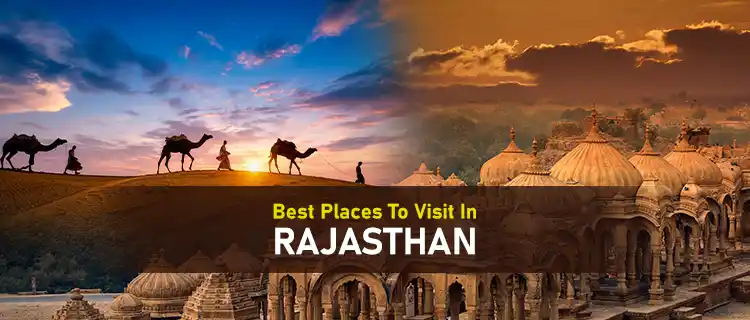Ranthambore National Park in Rajasthan is famous for its rich wildlife and majestic Royal Bengal tigers. Yet, amidst the wilderness lies a sacred destination that draws thousands of pilgrims and tourists every year—the Ranthambore Ganesh Mandir, known officially as the Trinetra Ganesh Temple Ranthambore. Perched within the ruins of the historic Ranthambore Fort, this ancient temple holds immense spiritual value and continues to be a highlight for travelers seeking both divine blessings and cultural immersion.
A Temple With Timeless Spiritual Significance
The Trinetra Ganesh Temple is believed to be one of the oldest and most revered Ganesh temples in India. The term “Trinetra” refers to the three-eyed form of Lord Ganesha, representing wisdom and foresight. Unlike most temples dedicated to Ganesha, this one uniquely features the entire Ganesha family—his wives Riddhi and Siddhi, and sons Shubha and Labha—making it spiritually complete. This sacred space is not just a place of worship but also a living testament to India’s devotional heritage.
Visitors often bring with them handwritten letters addressed to Lord Ganesha, expressing their wishes and hopes. These letters, delivered with complete faith, reflect the deep emotional connection between the devotees and the deity. It is this unique tradition that contributes to the temple’s growing popularity among both first-time visitors and repeat travelers.
A Spiritual Pause in the Midst of Wilderness
Many tourists visiting Ranthambore for its wildlife safaris also seek moments of peace and spiritual introspection. The Trinetra Ganesh Temple offers that perfect balance. Nestled within the formidable Ranthambore Fort, a UNESCO World Heritage Site, the temple gives you a panoramic view of the park while offering a moment of spiritual silence amidst the echoes of nature. The climb to the fort and temple is also part of the experience, as you traverse historical gates and stone pathways surrounded by langurs, peacocks, and ancient trees.
For travelers staying at the Best resort in Ranthambore, the temple is often included as part of guided cultural excursions. Many luxury resorts curate immersive experiences that combine wildlife safaris with visits to historic and spiritual sites, ensuring guests leave with a well-rounded perspective of Ranthambore’s rich tapestry.
A Glimpse into Rajput History and Architecture
The Ranthambore Fort, within which the Ganesh Mandir is located, was built in the 10th century and has seen the rule of many dynasties, including the Chauhans and the Mughals. The temple’s architecture reflects an unbroken link to this ancient past. Constructed with local stone and simple yet powerful design elements, the temple structure speaks volumes of the architectural style of medieval Rajasthan.
Visitors are often taken aback by the harmony of natural beauty and man-made grandeur. With the backdrop of dense forest and the silhouette of a historic fort, the temple offers a rare opportunity to explore India’s spiritual and cultural confluence in a single visit.
When Tradition Meets Hospitality
What makes the temple visit even more meaningful is the seamless integration of tradition with modern-day hospitality. Many premium accommodations in the region, such as a Luxury Resort in Ranthambore, offer spiritual tours with local experts who share fascinating stories and legends surrounding the temple. These guided tours are not just informative but deeply enriching, helping guests understand the deeper meaning behind rituals, architecture, and local customs.
For those planning an extended stay, these resorts often arrange early morning visits, allowing guests to experience the serenity of the temple at sunrise, accompanied by the soft chanting of mantras and the scent of incense rising with the morning mist.
Ideal Time to Visit and What to Expect
The best time to visit the Trinetra Ganesh Temple is between October and March when the weather is pleasant and wildlife sightings are at their peak. Tuesdays and special Hindu festivals like Ganesh Chaturthi witness a surge in pilgrim footfall, adding to the vibrant energy of the temple. On such days, the temple becomes a colorful hub of devotion, with devotees lining up with sweets, flowers, and letters for Lord Ganesha.
Footwear is to be left at the base, and it’s recommended to carry water and wear comfortable shoes for the walk uphill. The experience is worth every step, as you’re greeted not only by the deity’s calm and assuring smile but also by views that stretch for miles across Ranthambore’s rugged terrain.
Testimonials from Devotees and Travelers
Many visitors share emotional testimonials after visiting the temple, often speaking of a calm they hadn’t experienced elsewhere. From couples praying for a new beginning to wildlife photographers seeking a blessing before entering the jungle, the Trinetra Ganesh Temple attracts a wide spectrum of visitors. For local communities, the temple continues to be a central part of festivals, family rituals, and life milestones.
The simplicity of its setting and the depth of devotion associated with it are what make this temple so magnetic. It’s not just a tourist spot; it’s a spiritual journey.
Why It Belongs on Every Itinerary
Whether you are a history enthusiast, a spiritual seeker, or a traveler simply drawn to culturally rich destinations, the Ranthambore Ganesh Mandir offers something rare—a connection. It ties together nature, history, and spirituality into one unforgettable experience. As part of a holistic Ranthambore visit, this temple is not just an optional stop; it’s the heart of the journey.
In a land known for tigers and forts, the Trinetra Ganesh Temple stands tall as a symbol of devotion, continuity, and peace. It reminds every traveler that amid adventure and discovery, there is always space for reflection and reverence.




